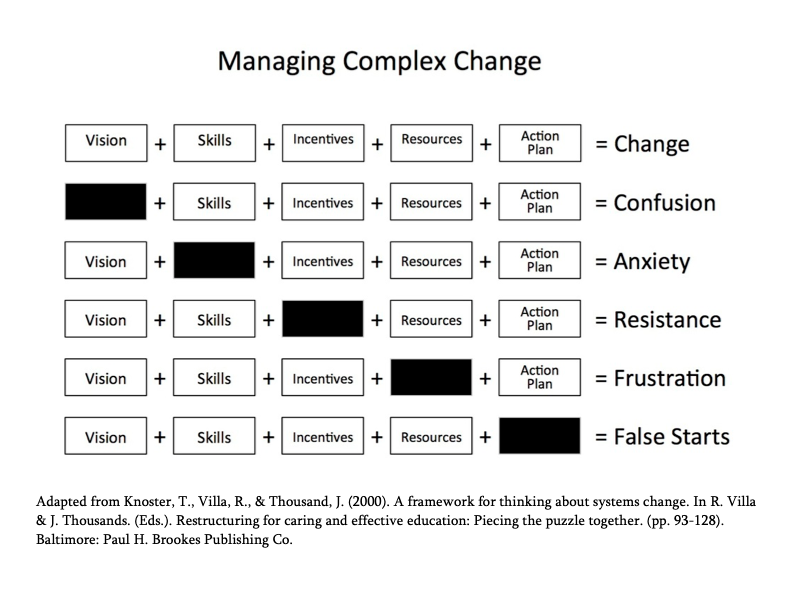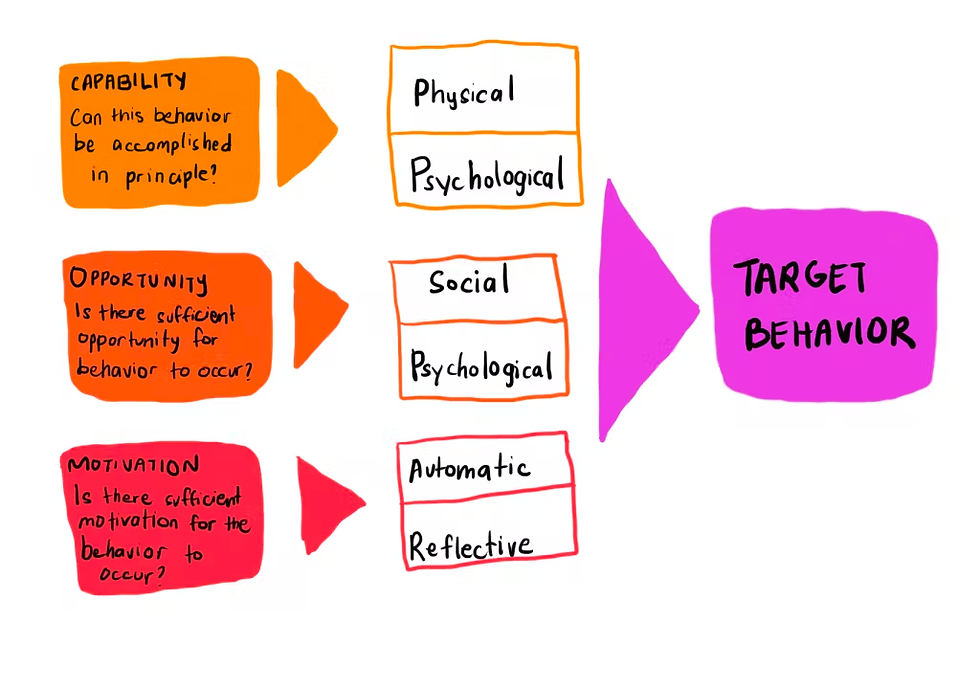Change is Coming; how do you prepare?
- Apr 7, 2023
- 7 min read
An athletic wear company, Nike, has a famous slogan you may be familiar with ‘Just Do It.’ While the slogan is wildly popular and may get many a person to engage in active movement a few times, a ‘Just Do It’ mantra alone is rarely enough to instill the daily practice of jogging in someone. The persistent inability of people to alter their entrenched habits and routines is real and can even be life-threatening. Leading change experts Robert Kegan and Lisa Lahey have identified this difficulty in adjusting one’s pattern of actions, sometimes even in the face of potentially dire consequences, as the immunity to change in their book Immunity to Change: How to overcome it and unlock the potential in yourself and your organization (2009). To demonstrate the immunity to change, Kegan and Lahey (2009) refer to a medical study that showed “if heart doctors tell their seriously ill heart patients they will literally die if they do not make changes to their personal lives, such as changing their diet, engaging in regular exercise, or quitting smoking,-still, only one in seven is actually able to make the changes.” ( p 21 Kindle)
They go on to state:
If people cannot make the changes they dearly want to when their very lives are on the line, then how can leaders at any level, in any kind of organization, expect to successfully support processes of change—even those they and their subordinates may passionately believe in—when the stakes and the payoff are not nearly as high? (Kegan & Lahey) (p. 22)
Knowing that change is difficult, as described by Kegan and Lahey, and as leaders in change, we need to acknowledge the challenges change can present in implementation of any new ‘thing’. Systems are great at identifying a new ‘thing’, adopting a new ‘thing’, and telling practitioners to DO the new ‘thing’ but often miss supporting them to and through the adoption of the new ‘thing’. Unfortunately, the new ‘thing’ ends up in the graveyard of good ideas. Not because it was an inappropriate ‘thing’ to do but because there was a lack of support to get the new the ‘thing’ in place.
To assist in the change journey, this article will present two change theories to consider and use to support change efforts. Before embarking upon change, it is worth taking some time to provide the implementation teams (if you have them) and implementers with information and tools to support change in the work moving forward.
Managing Complex Change: Two Tools to Consider
Change equals learning, and learning equals change. Adopting a research-based change theory and utilizing an implementation framework builds in support to help execute your plan. Doing so intentionally builds in human and learning-centered design elements. A good change process requires a strong focus on the human element. Selecting a change theory is an important step in building Deliberately Developmental Implementation (DDI) because you are being deliberate about addressing the psychological needs of the people experiencing the change. Entering a change effort without a change theory to support addressing the emotions, behaviors, and frustrations that are inevitable is like flying a kite without wind. You get stuck and hope the wind (the next action or strategy will work) will come and lift the kite (innovation/evidence-based practice) up to soar. That is no way to meet the moments of challenge that implementation teams will face.
One of the most approachable and powerful change process tools we utilize is the Model for Managing Complex Change. We have found this model extremely valuable in managing change. The change management process identifies five elements as necessary for successful change implementation: vision, skills, incentives, resources, and an action plan. What we find powerful about this model is that it indicates what outcome will be experienced when an element is missing. For example, if there is a lack of vision, people involved in the change may experience confusion, or if staff expresses anxiety, this would indicate a lack of skills. This is particularly useful as it allows the implementation team to backtrack from the issue and get to the cause of it.
Confusion → lack of Vision: This can stem from poor communication of the vision, an unclear vision, or lack of understanding of the vision, lack of gaining and sustaining buy-in for the vision, etc.
Anxiety → lack of Skills: this means that the implementers need to have access to and be provided the knowledge, skills, and opportunities to build competence in deploying the work.
Resistance → lack of Incentives: incentives are important as they provide motivation and momentum to push through when acquiring new skills becomes difficult, is time-consuming, or is being adopted widely.
Frustration → lack of Resources: think of resources beyond the material items necessary to perform the new skills. Consider time, human capital, funding, and capacity for new learning. Lacking resources will impact progress and attitudes it’s very frustrating to see that everything is aligned and ready but doesn’t progress.
False Starts → lack of Action Plan: action plans align resources, vision, and timelines, provide a structure for the team to work from, and monitor and adjust progress. In absence of an action plan, efforts falter and become training can be random and lack focus.
In the absence of all five elements, even the most well-intentioned change effort can fail to meet the complex needs of the people involved in the change. The power of the Managing Complex Change process (Knoster & Villa 2000) is that it gives the team indicators of what psychological safety needs may be being displayed by people experiencing the change. Figure 1 is the Managing Complex Change process showing all the change elements and corresponding anticipated behaviors when a specific element is missing. Review Figure 1, Managing Complex Change, below, and think about which element is a strength for your organization and which element is a stretch.
Figure 1: Managing Complex Change

Adopting and using a change model helps implementation teams and or leaders identify barriers to change and develop actionable recommendations that address the human elements of change. In short, they help identify the root cause and keep us from abandoning the plan. Because behavior is such a big part of change, we invite you to think about change as ‘What new behaviors do staff need to learn/change?’ Another change model we have seen teams have success with is the COM-B model of behavior change. The COM-B is helpful in answering the question of ‘What needs to change for the desired behavior/s to occur?’ For behavior to change, think about what three conditions you think need to exist.
The COM-B model of Behavior Change cites three factors to consider when planning change, capability, motivation, and opportunity. Jen Briselli & Amy Bucher, Ph.D. (2021) describe these as separate but interrelated; capability, opportunity, and motivation are interrelated and can influence each other. For example, when people are more skilled or practiced at a behavior (capability), they are more likely to consider it as an option and to prioritize it against other options (motivation). Similarly, if a behavior is easier to perform within a certain context (opportunity), it becomes a more attractive option (motivation). (Briselli & Bucher 2021)
COM-B Behavior Components, as described by Michie S. Stralan M., and West R., (2011) are:
Capability is defined as the individual’s psychological and physical capacity to engage in the activity concerned (p.5) This is the new knowledge, skills, and abilities the implementer must develop to be able to perform the desired change behavior effectively. To perform well, one needs to feel capable and confident that they have the skills necessary to achieve the desired outcome.
Motivation is defined as all those brain processes that energize and direct behavior, not just goals and conscious decision-making. It includes habitual processes, emotional responding, as well as analytical decision-making. It includes habitual processes, emotional responding, as well as analytical decision-making. (p 5) Motivation is often overlooked in the implementation of a new change initiative. Just because the leadership team is fully onboard and ready to champion the change does not mean the implementers have the same motivation.
Opportunity is defined as all the factors that lie outside the individual that make the behavior possible or prompt it. (p. 5) These include the physical environment, resources, and social environments that support and enable the adoption of the new skills and behaviors associated with the change.
We have found the COM-B Model for Behavior Change to be helpful for implementation teams to utilize in designing the implementation plan and addressing human behavior and needs. Figure 2 below is from The Decision Lab article The COM-B Model for Behavior Change. Notice the descriptors in each box. What stands out to you?
Figure 2 COM-B Model for Behavior Change The Decision Lab (n.d.) 2023
Figure 2

Conclusion: The Truth is…
Change involves emotion. Changing human behavior is critical to meeting the challenges of implementation. Understanding that people involved in the change will experience stages of emotion can help you plan for those reactions and support them to and through the stages of implementation. We encourage you and your team to leverage your understanding of change and select and utilize a change process tool. While we have shared two examples with you, there are plenty of research-based change process tools for your team to choose from as you embark upon your implementation journey.
A few final reminders about change:
Managing change is complex; managing change and “rethinking” how we address behaviors related to change is extremely challenging. Focusing on the psychological needs of the implementers helps you build DDI.
Get comfortable with the fact that we won’t get it exactly right the first time. Build an improvement mindset throughout your organization. Communicate clearly and often that getting it right the first time is not what is critical; constantly reviewing, measuring success, adapting, and adjusting is critical.
Change is here. How we plan for and adapt to change is in our hands. Use these foundational concepts and tools to support your system's current change process. Focus on rapid improvement (use a valid process to do so), involve your stakeholders in design and decision-making, be kind to one another, lead with your heart, and passionately embrace an improvement mindset.
Jenice Pizzuto
References
Briselli, J. Bucher A.PhD ( 2021, August 23). COM-B + Experience Mapping: A Design Thinking Love Story (Blog Post) Accessed at
https://bootcamp.uxdesign.cc/com-b-experience-mapping-a-design-thinking-love-story-f09e3403495#2559 on February 1, 2023.
Knoster, T., Villa, R., & Thousand, J. (2000). A framework for thinking about systems change. In R. Villa & J. Thousands. (Eds.). Restructuring for caring and effective education: Piecing the puzzle together. (pp. 93-128). Baltimore: Paul H. Brookes Publishing Co.
The Decision Lab. (2023) The COM-B Model For Behavior Change.
Accessed at https://thedecisionlab.com/reference-guide/organizational-behavior/the-com-b-model-for-behavior-change on January 30, 2023
Kegan, R.; Lahey, L., Laskow; Immunity to change (leadership for the common good) Harvard Business Review Press. Kindle Edition.
Michie S., Stralan M., West R., The behaviour change wheel: A new method for characterising and designing behaviour change interventions. Implementation Science 2011 6:42.




Comments